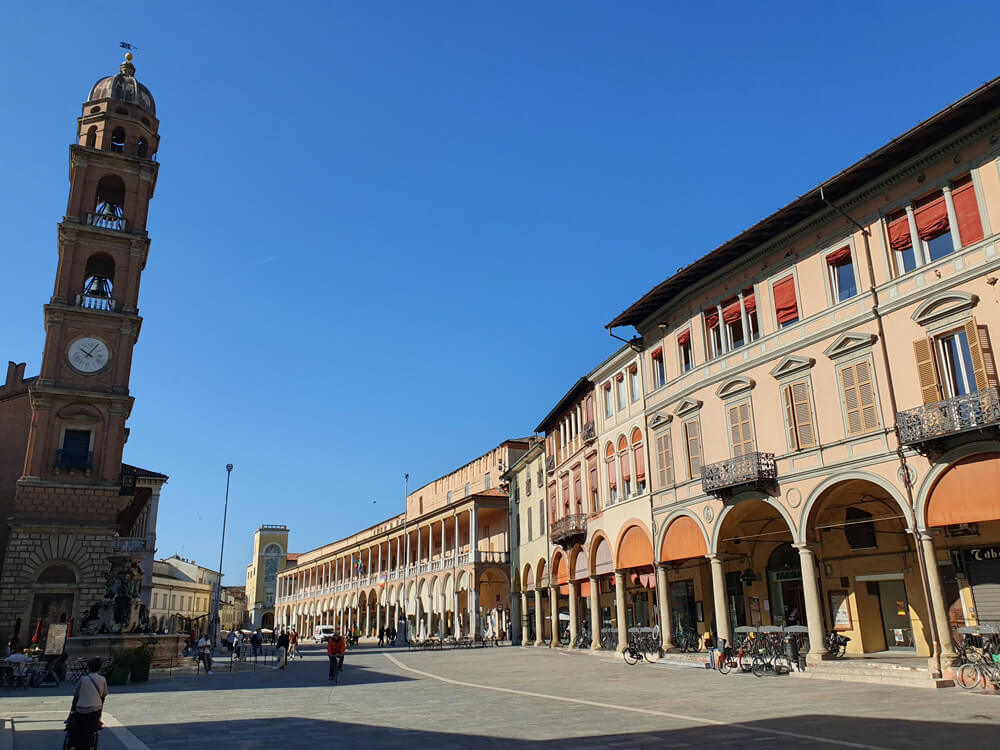Faenza is an attractive historic town (population 59,000) in the region of Emilia-Romagna, north-eastern Italy, along the old Roman Via Emilia. Although not on the main Italian tourist trail, Faenza is renowned for its history of ceramic production, and the excellent Museum of Ceramics attracts visitors to the town. The town markets itself as Faenza: Città della Ceramica (City of Ceramics).
Watch the buzz of urban life from a café table in the elegant piazza, visit a splendid palace-museum and local art gallery, stroll the streets and you’ll find Faenza a very enjoyable place to spend a day or two. As well as the famed ceramics museum, there is still ceramic production to explore today with shops and studios around the town. As with other towns in Emilia-Romagna you’ll discover excellent Italian and regional cuisine at reasonably priced restaurants.
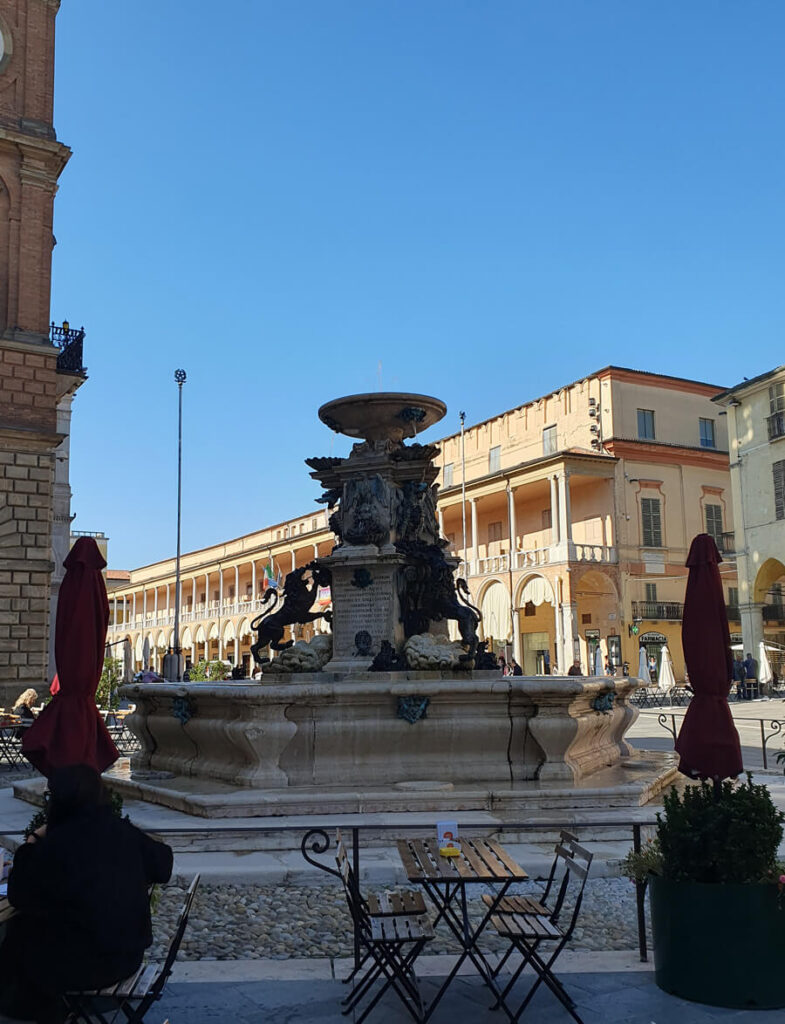
Faenza is in the province of Ravenna and grew up by the river Lamone where it was crossed by the Via Emilia. A major railway line now follows the line of the old Roman road through the region. Thanks to Faenza’s good rail and bus connections, it’s a practical destination or stop-over for car-free travellers as well as those driving. If you have time in the area, I’d strongly recommend taking a trip into the surrounding countryside and the low foothills at the edge of the Apennines where Emilia-Romagna meets Tuscany. The tiny town of Brisighella is a gorgeous place just seven miles from Faenza and you really shouldn’t miss it when you’re here.
Why to visit Faenza
- For its ceramics history, museum and modern workshops
- Soak up authentic Italian atmosphere in this handsome town
- Tour a fabulous neoclassical palazzo
- Good transport connections make it easy to use as a base or stopping-place on a tour of Emilia Romagna
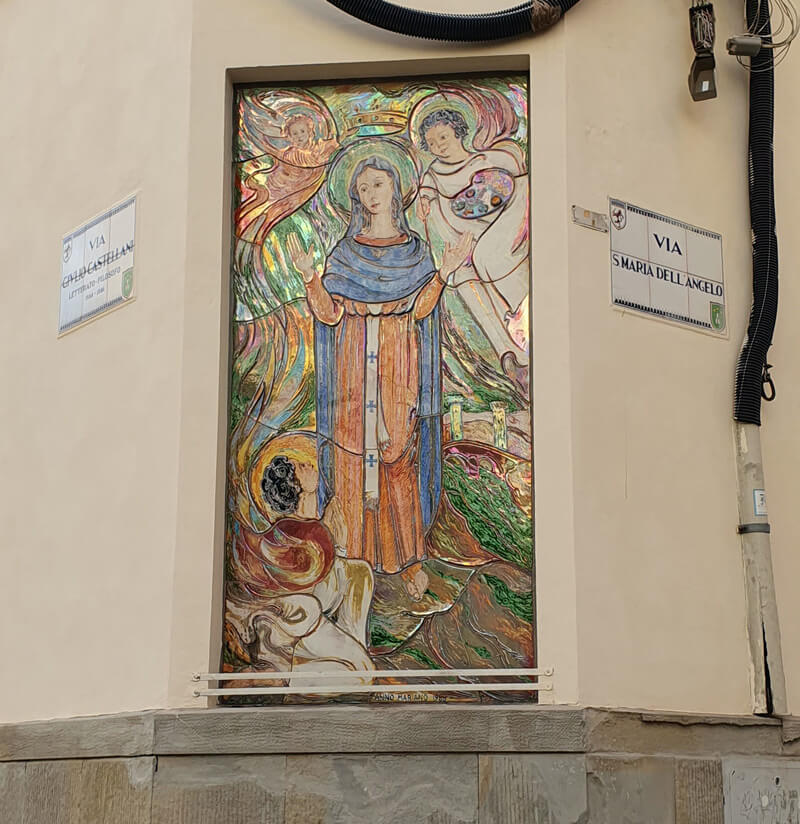
What to see and do in Faenza
The heart of Faenza, and its most impressive showpiece, is the long theatrical open space made up of Piazza del Popolo and the adjacent Piazza della Libertà. This is the ideal place to begin your exploration of the town. You’ll find the town’s most important buildings and the thrice-weekly market (Tuesdays, Thursdays and Saturdays) here. After popping into the tourist office (below), the enticing café tables in the square are the perfect place to sit and plan your day.
Arcaded porticoes line the square; the warm-toned buildings above dating to a range of eras in Faenza’s history. The Palazzo Manfredi (or Comunale) and Palazzo del Podestà face each other, a testimony to the town’s past importance under the Manfredi dynasty, the local lords during the fourteenth and fifteenth centuries. Faenza’s cathedral is located off to the end of the open space, in Piazza della Libertà, strategically placing a separation between civic and religious authority.
Walking through Palazzo Manfredi towards its courtyard you’ll come to the tourist information office, the Pro Loco, which doubles as a ceramics display space. With its friendly staff, useful maps and information on local sights, opening hours and transport, I’d recommend this as a first port of call in the Faenza area. If you’re interested in visiting more than one museum, look into combined tickets. At the time of writing there’s a Faenza Musei Card covering the three museums I describe below: pick it up at the first museum you visit and get a discount on your admission tickets for the other two.
Cathedral
Faenza’s cathedral (Duomo), with its unfinished façade, is dedicated to St Peter and dates to the end of the fifteenth century. The rather heavy-feeling interior contains several artistic highlights; take coins for lights to illuminate these (€2 when I visited).
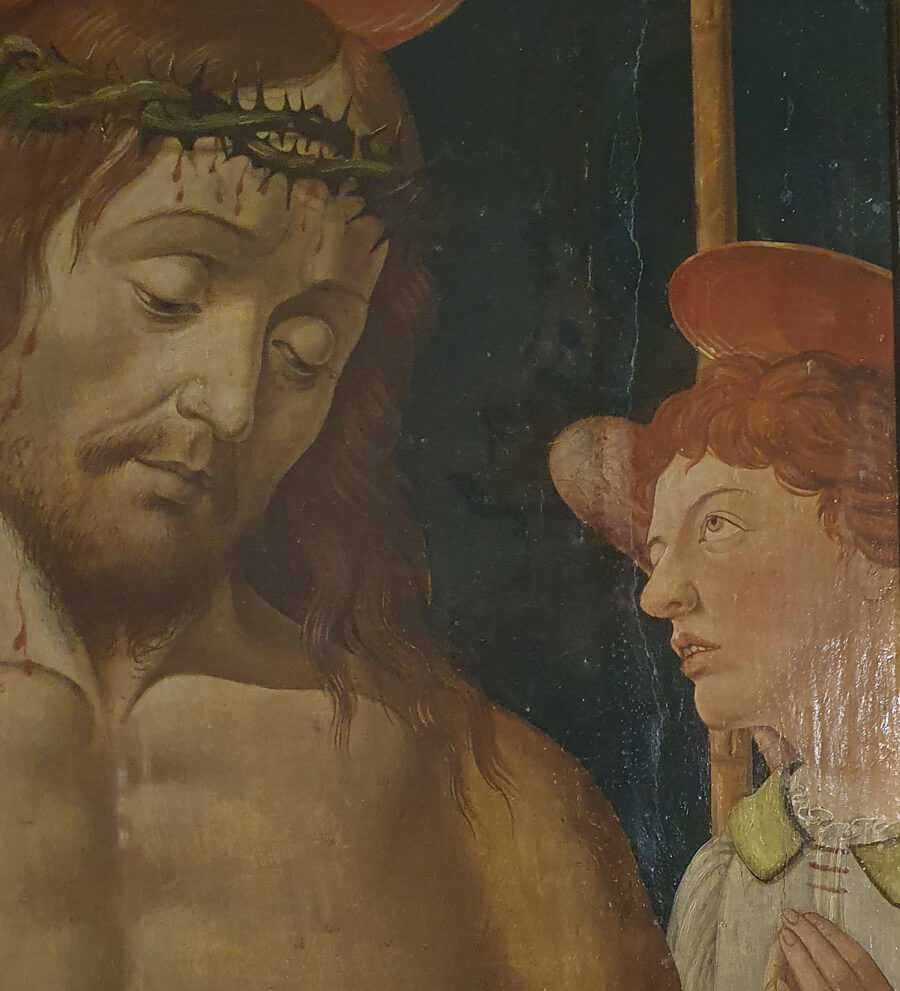
Don’t miss the fine painting of Christ Suffering Between Two Angels by Florentine artist Biagio d’Antonio (c.1480) on the side-wall of a left-hand chapel, or the large altarpiece depicting a Sacra Conversazione by Innocenzo da Imola (1526). The chapel of San Terenzio contains Renaissance reliefs telling stories of the miracles of St Terenzio, a local saint and hermit.
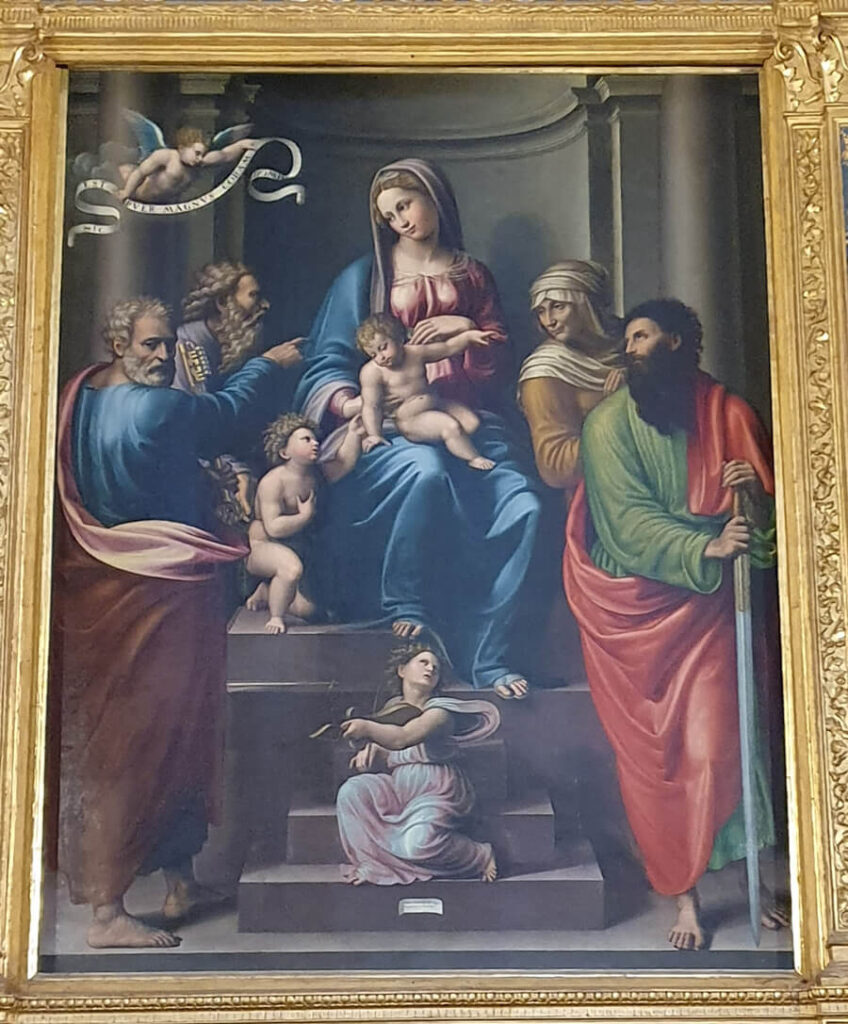
Another chapel commemorates and houses the remains of a curious saint with local and distant connections. The chapel of Sant’Emiliano is named for a mysterious ‘Scottish bishop’ (possibly 6th century) who died in Faenza while travelling home from Rome to Scotland. This saint has been revered in town through the centuries since, originally in a church dedicated to him. Parts of the marble monument containing his remains date to the 15th century. The upper panels are scenes from the saint’s posthumous career, with his relics being rediscovered and transported to the church, and a miracle he performed during a shipwreck. (I’ve also read this little-known saint described as a pilgrim-bishop from Ireland; nothing really seems known about him other than the history of local veneration of his relics. It’s an intriguing story).
Fountain and clock tower
The cathedral stands at the top of a flight of steps offering excellent views over the town square. One of the finest features in this urban stage-set is the grand fountain between the Duomo and the nearby clock tower. Known simply as the Fontana monumentale (monumental fountain), this 17th-century baroque creation was an important source of drinking water for the town when it was built connected to a new aqueduct.
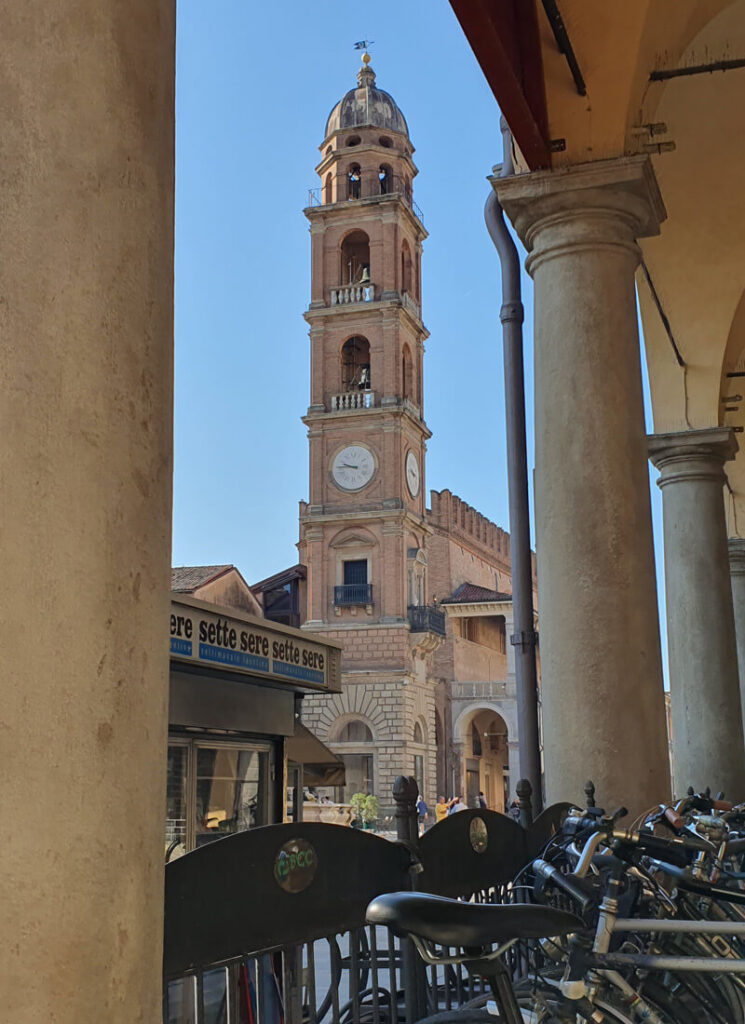
The Torre dell’Orologio, Faenza’s clocktower, also dates to the early 17th century. It was blown up by German troops retreating from the town in 1944, and rebuilt in 1953 with the Italian philosophy “as it was, where it was”. Consequently the view hasn’t changed much since it was sketched by JMW Turner in 1819 – Turner sketch held by the Tate.
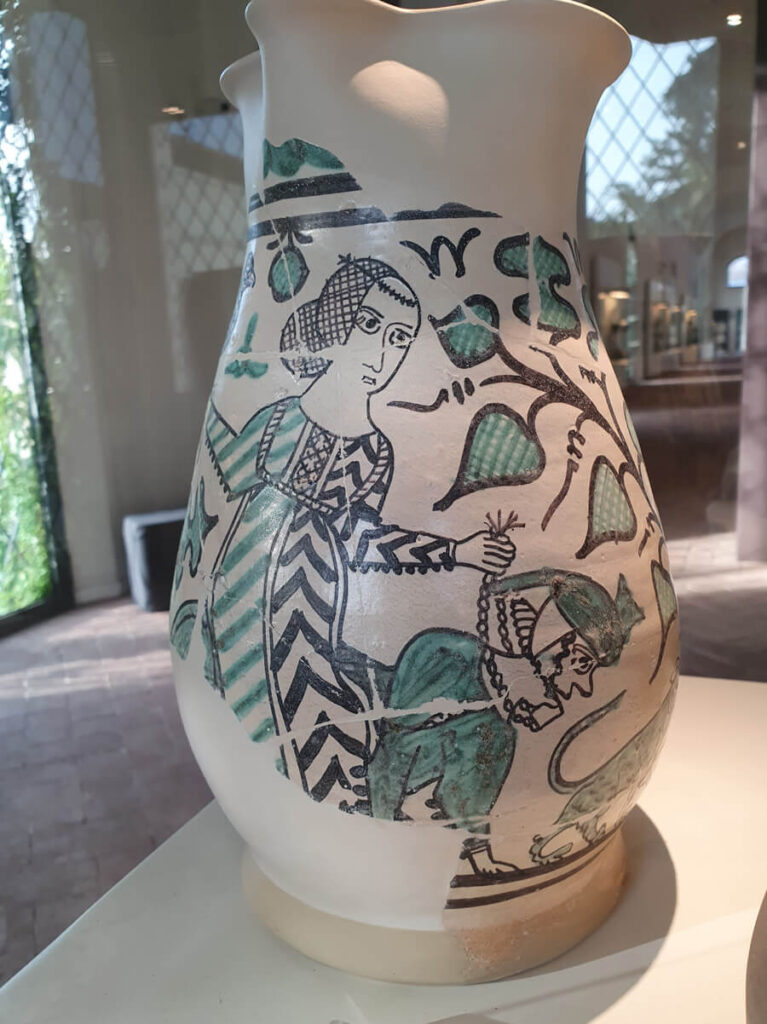
Faenza and ceramics
Even if you’re unaware of Faenza’s artistic history, you may be familiar with the term faience (or faïence) ware. This type of tin-glazed, decorated pottery was produced, popularised and exported from Faenza, particularly during the fifteenth and sixteenth centuries, and took its name from the town. Some of the finest examples of Italian Renaissance majolica in museums around the world come from this unpretentious town.
As well as its landmark museum, Faenza has a living tradition of ceramic production. You can admire and purchase fine ceramics at artistic workshops around town, some produced by creators who will have learned their trade at a local specialist college. And reminders of Faenza’s heritage are dotted around the streets – look out for ceramic decorative signs, tiles and sculptures.
International Ceramics Museum
Faenza’s greatest tourist attraction is its Museo Internazionale delle Ceramiche (MIC). As its name suggests, this museum of ceramics is internationally important, said to be the largest of its kind in the world. Although it naturally specialises in Italian ceramics and particularly those from the local area, the museum also covers the wider history of ceramic production globally and includes many international exhibits.
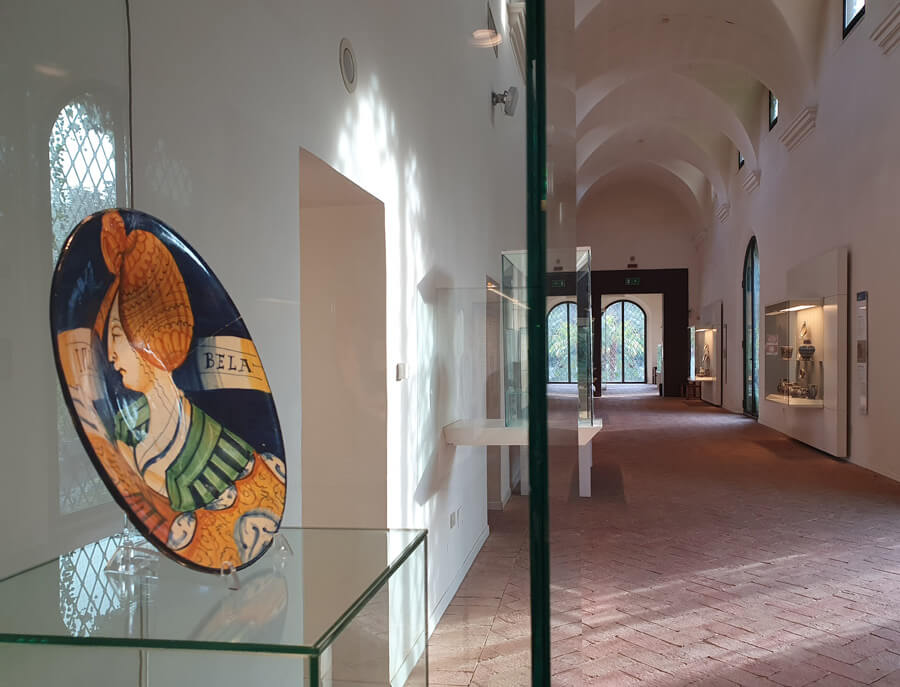
Founded in 1908, the museum was another victim of the Second World War. The building was destroyed by bombing in 1944, and much of its collection along with it. Big efforts, donations and support from round the world saw it re-established. Picasso was among the international supporters of the museum and donated some of his works, which are on display here.
The MIC’s collection records and celebrates the long history of ceramic production, of artisans and artists, up to the present day, with contemporary works and changing exhibitions. It’s a teaching, study and restoration centre too. I’d recommend allowing plenty of time – at least an hour – to explore the galleries at your leisure without feeling rushed. The museum’s significance is reflected in longer opening hours (and higher prices) than most museums in the area.
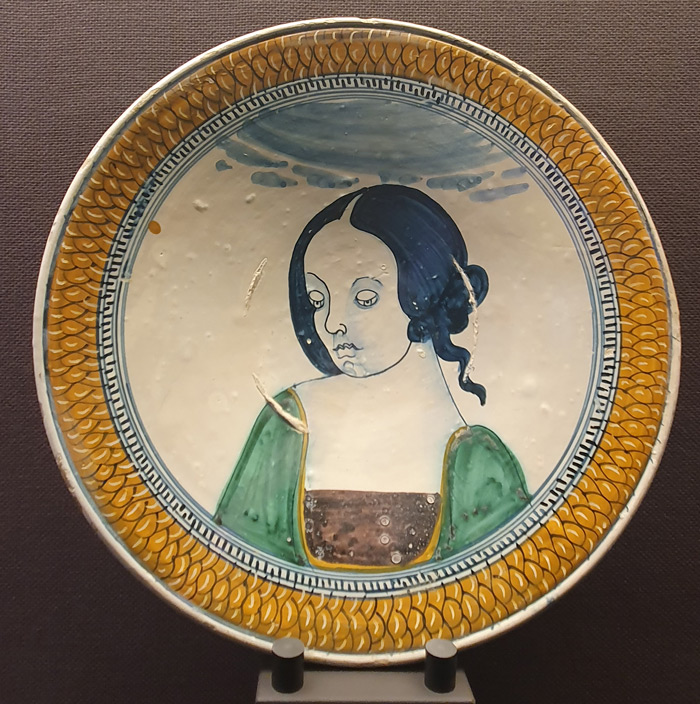
Lower-floor rooms start with an introduction to production techniques, and contain displays of porcelain and ceramics from distant history and from cultures around the world including ancient pieces from China. The wildly varied twentieth-century collections are fascinating, with the annual Faenza Prize-winning works offering a chronological history of artistic trends.
Among these galleries, at the foot of a ramp and somewhat hidden away, is a very interesting exhibit that’s rather different from its neighbours. The Presepe Zucchini is a traditional nativity scene dating to the 19th century, comprising over 60 painted terracotta figures and a fabulous backdrop painted by a theatrical scenery artist. A staff-member directed me to this rather hidden treasure, it obviously being a favourite of hers.
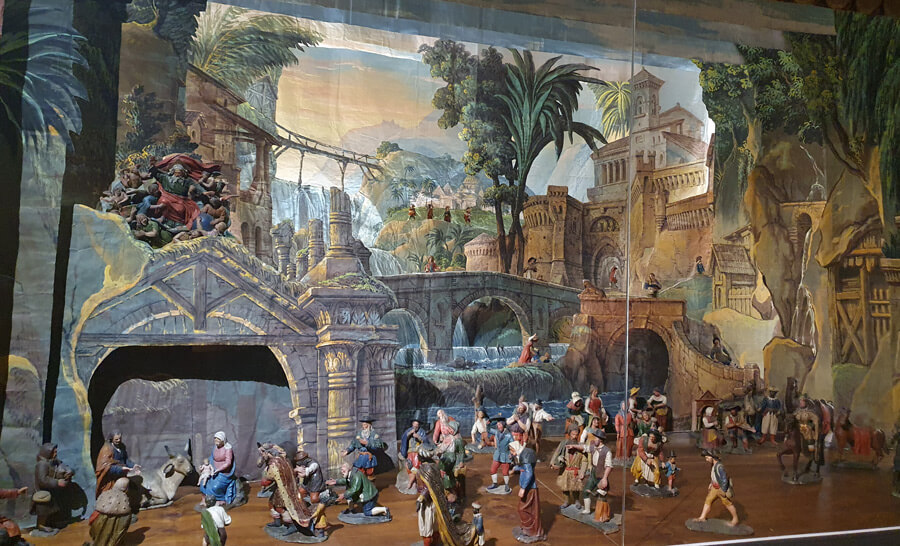
Upstairs in the wings of the building surrounding a courtyard are the historical galleries where you can study and admire the great tradition of decorative ceramics which spread Faenza’s name throughout Europe. These largely-chronological displays include the wonderful story-telling dishes which lavishly reproduce scenes from myth, history and religion. I’ve always been a fan of these, and there are some really fine examples on display. It’s interesting to see the scenes which were most popular with artists: the Judgement of Paris, for example, and Actaeon discovering Diana and her maidens bathing (prime opportunities for the artists and customers to enjoy depictions of nude beauties).
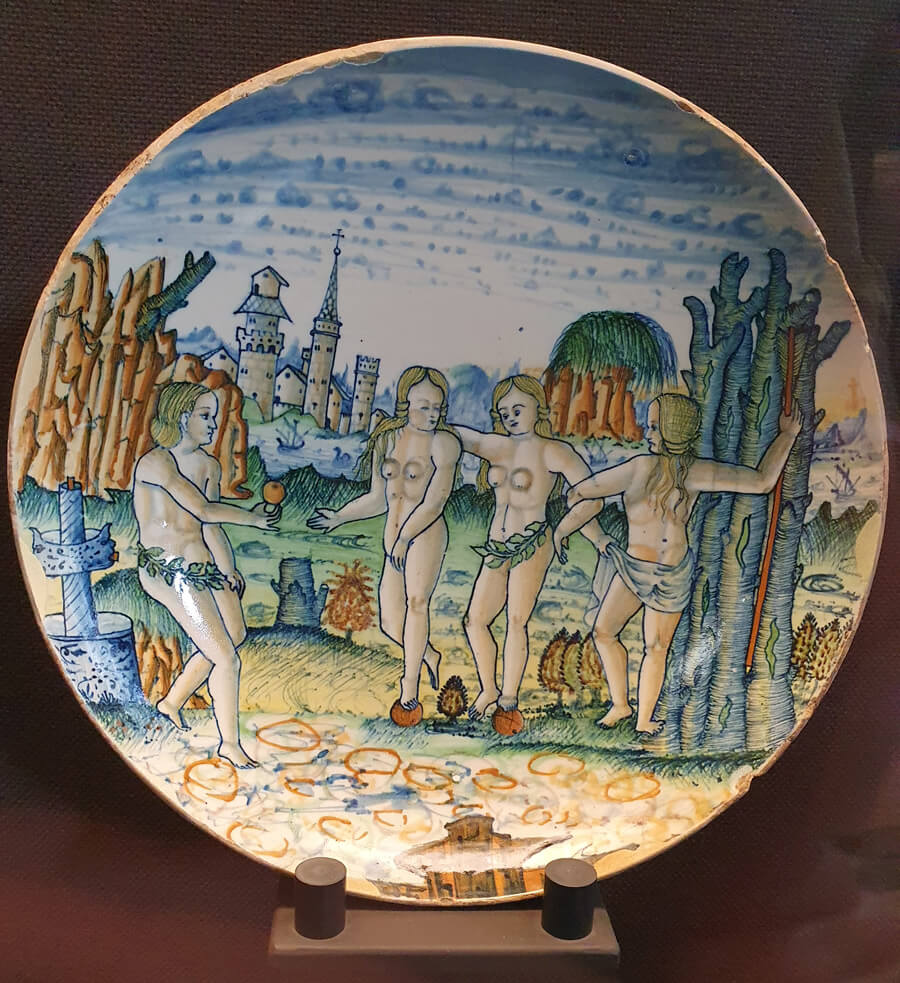
One of themes I found most compelling in these galleries, though, was the celebration of individual real-life women on ‘love pottery’. These belle (beauties) are depicted to emphasise their seriousness, their talent and beauty, sometimes with their names or attributes added alongside, but one of the most striking features to modern eyes is their solemnity. Seeing so many examples in one place brought home to me that ‘glum women on Renaissance pottery’ really is a genre of its own.
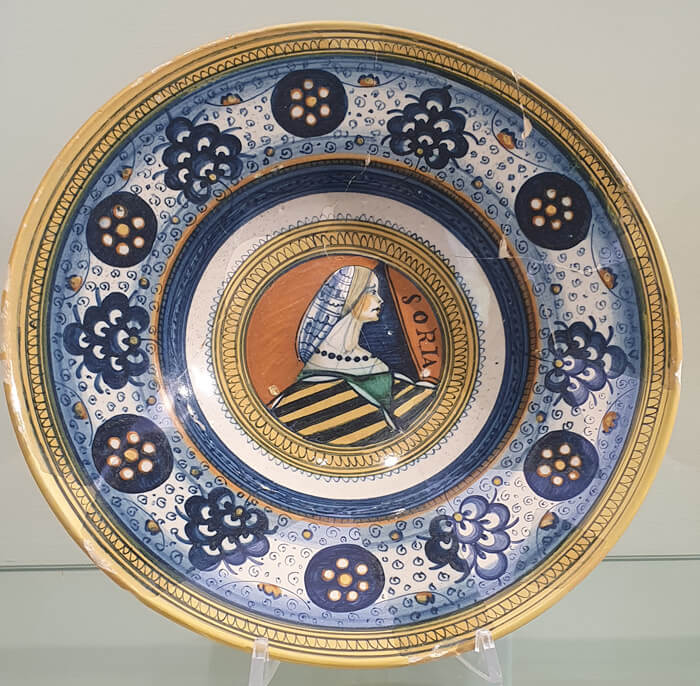
Moving on …
Although the MIC is Faenza’s most celebrated museum and will be on many visitors’ must-see lists, I’d strongly recommend allowing time for at least one or two of the town’s other museums. Neither of those I recommend will take very long to see.
Palazzo Milzetti – neoclassical splendour
My personal star attraction of Faenza was Palazzo Milzetti. It was a lucky spur-of-the-moment decision that led me there, as I had limited research time and it hadn’t been at the top of my priority list. If you’re keen on stately homes, 19th-century art, interior design, neoclassical symbolism or romantic palaces, you may be bowled over just as I was.This grand neoclassical palace in the town centre was created between 1792 and 1805 for two generations of the aristocratic Milzetti family in a comprehensive renovation after the original 16th-century palace was damaged by an earthquake.
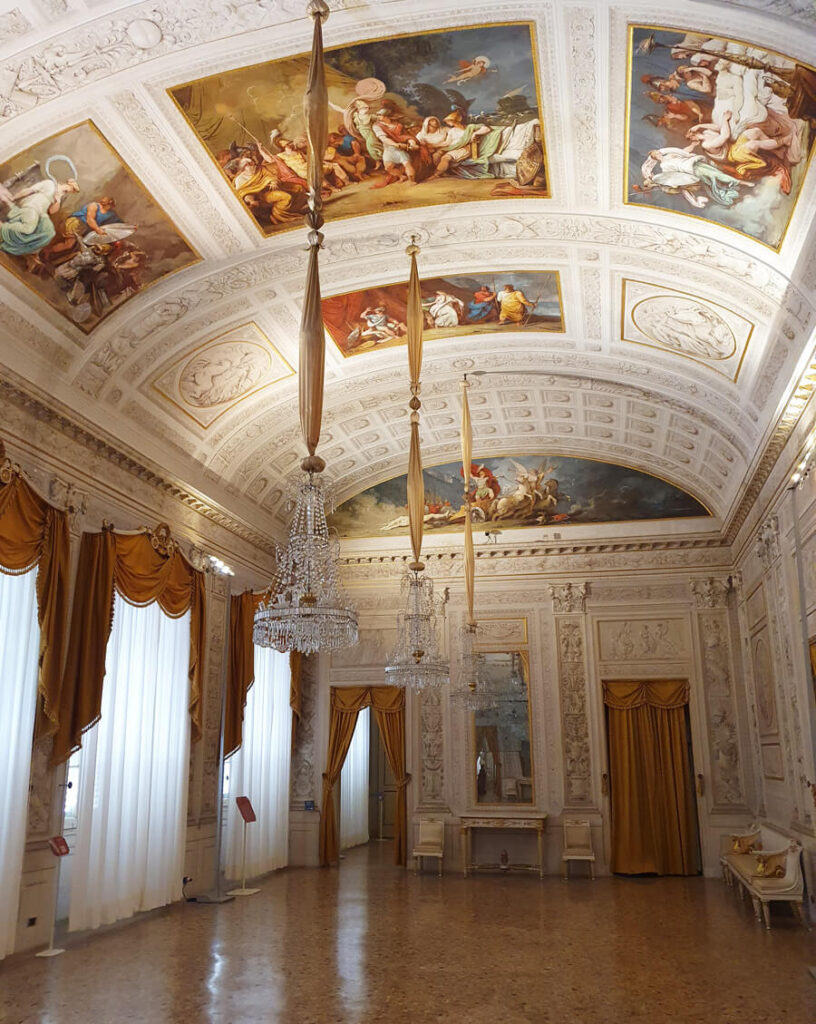
Most of the impressive interiors which glow today were the work of architect Giovanni Antonio Antolini and painter Felice Giani for Count Francesco Milzetti. Francesco was Captain Colonel of Napoleon’s Royal Guard of Honour; these were the Napoleonic years in northern Italy. Well-connected and deep into this forward-thinking cultural milieu, Milzetti’s ambitions for his home were grand, and were lavishly realised by the like-minded artists he employed.
Spaces covered with stucco and gilding are ornamented with paintings inspired by discoveries at Herculaneum, Pompeii and Nero’s Domus Aurea, by ancient history and myths, filled with allegory and also with Masonic symbolism. The palazzo interiors were designed to impress on every level, including intellectually.
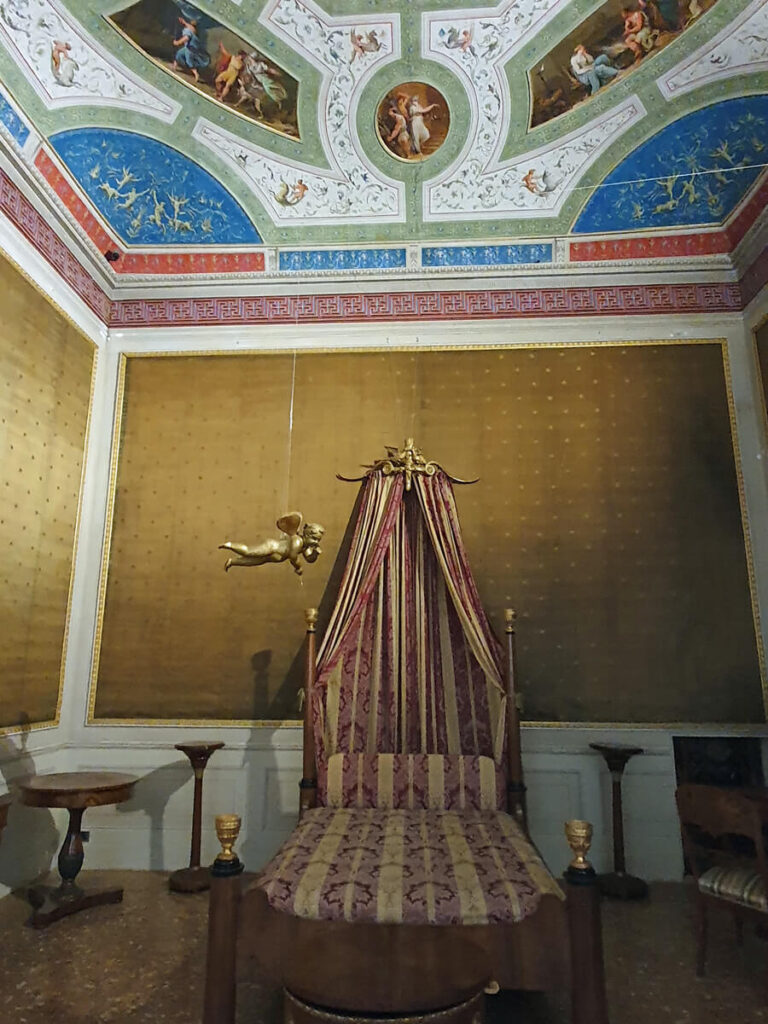
Unfortunately, and perhaps not surprisingly, Francesco Milzetti ended up in financial trouble and by 1808 he had to sell the palace and all its contents. He and his teenage wife never lived as planned in the luxurious surroundings or romantic bedchamber here. Nowadays Palazzo Milzetti is preserved as a fascinating monument and record to a particular period in time, to hopes and ideals that perhaps came to fruition only in the glorious decorations we can admire today.
Today there are only sparse furnishings and the rooms are largely empty, a series of breathtaking theatrical spaces. Information boards and QR codes provide some context to explain the intended functions and meanings. From the black-painted frescoed bath-chamber fit for seduction to the jaw-dropping first-floor reception hall, a Temple of Apollo, there’s a lot to take in. The experience is particularly atmospheric if you are the only visitor, as I was, wandering through and marvelling.
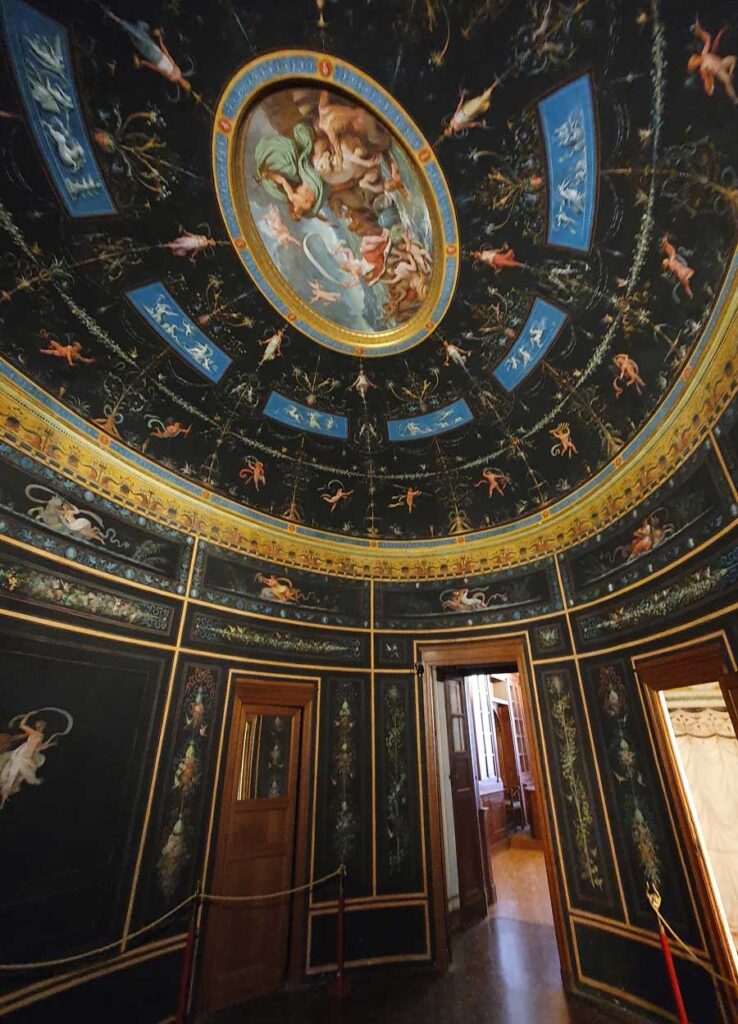
If you have the time to read or listen to the background info supplied (which is in English as well as Italian) there is a great deal of interest to learn about the artistic thought processes behind the decoration, about the Count, the artists and the youthful pro-French hopes and philosophies in this part of Europe at the time (some of this is available online: https://palazzomilzetti.cultura.gov.it/qrsala1eng/ ).
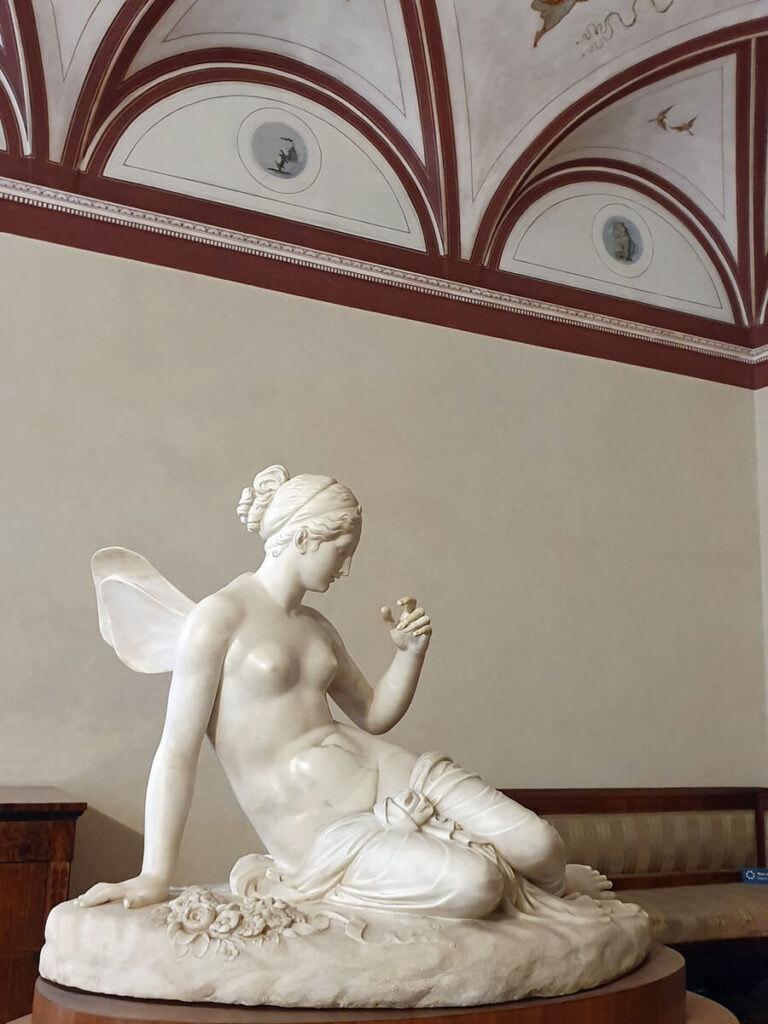
Town art gallery
The third museum on Faenza’s “should definitely see” list is the municipal art gallery, the Pinacoteca Comunale di Faenza. The collection here covers many centuries and is impressively varied. As art museums go, it isn’t very large and I’d say there aren’t that many works of the highest artistic levels. So you don’t need to allow too long to visit, though it is worth a stroll around and some time to spend with the finest pieces on display. The collections are well-presented in this small museum (where again I was the only visitor).
Highlights include a wooden statue of St Jerome attributed to Donatello or his workshop. Most of the exhibits are paintings, though, and there are some enjoyable and colourful Renaissance works to admire. I particularly liked the bright religious figures of Giovanni Battista Bertucci il Vecchio, and the two heads from a damaged altarpiece by the enigmatic Dosso Dossi and his brother Battista. From the 1830s and 1905 two striking self-portraits by local artists Gaspare Mattioli and Domenico Baccarini are reminders that self-dramatisation and the marketing of one’s image didn’t begin with Instagram.
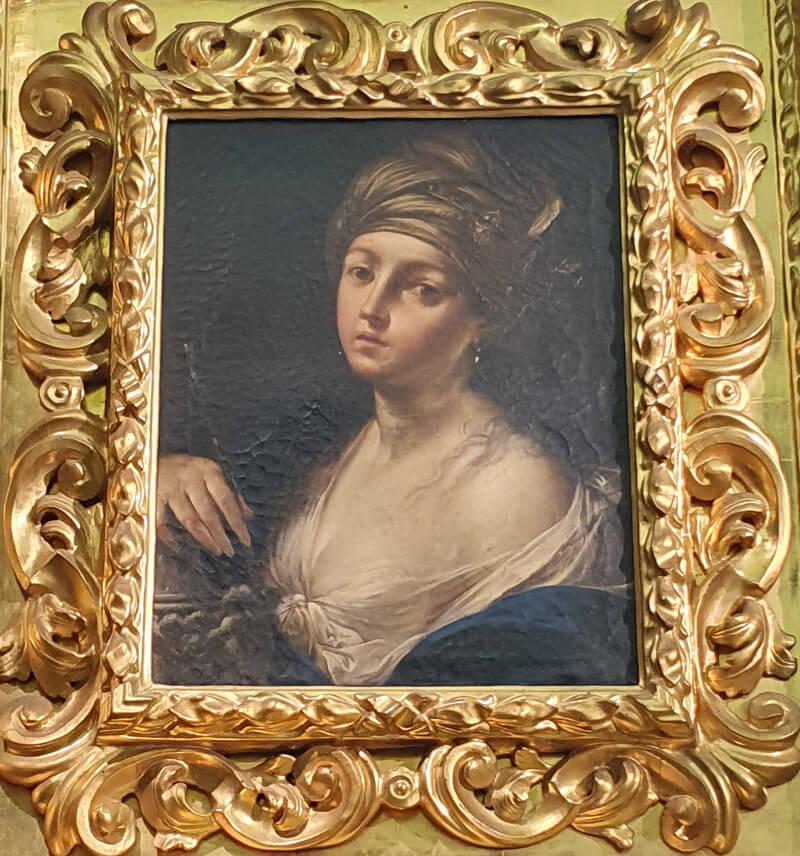
If you’ve already visited the Duomo, look out for a alternate version of Christ Suffering Between Two Angels by Biagio d’Antonio. Female artists are represented by Elisabetta Sirani and a nice Allegory of Sculpture by her pupil Ginevra Cantofoli. There’s a good modern collection featuring twentieth-century artists such as Giorgio de Chirico and Felice Casorati.
Note that the pinacoteca‘s opening hours are more limited than those of the ceramics museum, so check the official website when planning your day.
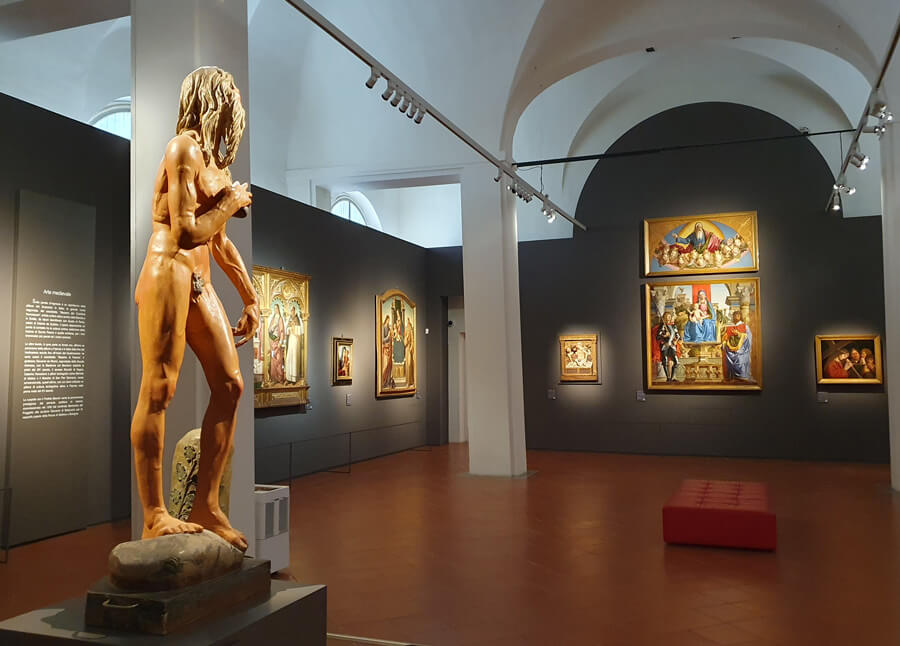
Other sights of Faenza
Other attractions in town include museums dedicated to two local ceramicists: Museo Carlo Zauli and Museo Riccardo Gatti. Additional museums include the church museum, a museum of WW2 and a museum of the Risorgimento. You can read more on the town’s official tourism website: https://www.prolocofaenza.it/. Exploring the town’s ceramic workshops and spotting its many works of public art are activities which combine well with a stroll around the centre.
On Corso Mazzini, Palazzo Mazzolani (number 93), was for some time an orphanage and is now an artistic institute. Inside the entrance hall is a collection of bits of pieces from Faenza’s Roman past: sculptural fragments, a scrap of mosaic etc.
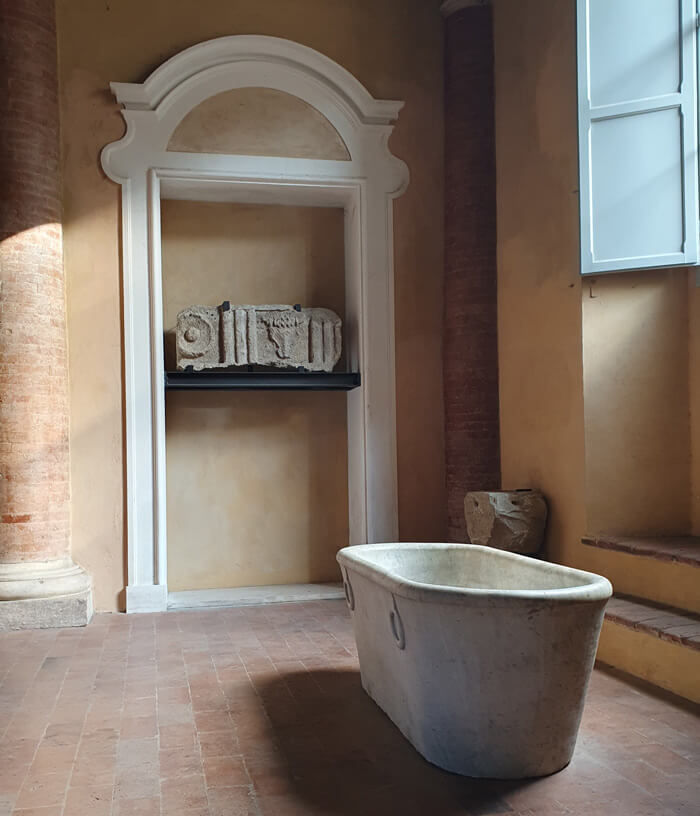
If you are spending more time in Faenza you may enjoy a trip outside the town centre to the green, leafy Parco Bocci where there’s a lake and animals to spot (including peacocks). For fitness enthusiasts there are walking/cycle paths along the banks of the river Lamone.
This part of Emilia-Romagna is, like the rest of the region, renowned for its food. Prized products local to the Faenza area include peaches, nectarines and apricots and DOC wines such as Sangiovese and Trebbiano.
Faenza and Formula 1
In addition to ceramics, Faenza has a certain modest claim to fame for its Formula 1 connections. The second, name-shifting Red Bull F1 team, known at the time of writing as Visa Cash App RB, is based here in Faenza: https://www.visacashapprb.com/en/. While there are no tours or public access to the team’s HQ, fans who want to visit could always take a trip to see the exterior of the building; half an hour’s walk or a 13 minute bus ride from station, on Via Boario. Photos: https://www.salracing.com/story/2024/8/visa-cash-app-rb-f1-team-faenza-factory
Imola, just nine miles from Faenza, is the home of the Emilia-Romagna Grand Prix. If you’re in the area for motor-racing, Faenza and nearby Brisighella are great destinations to include in your sightseeing itinerary, or to consider for an overnight base. They have an additional F1 connection: the annual ceremony to award the Trofeo Bandini. This memorial prize for individual achievement in F1 is presented in a ceremony divided between Faenza and Brisighella, generally to tie in with the timing of the Grand Prix (there’s more about the Trofeo Bandini on my Brisighella page).
When to visit
Like most city break destinations, Faenza makes a good destination all year round. In June a traditional competitive historic festival, the Palio del Niballo, takes place. Others may choose to visit during the Emilia-Romagna Grand Prix (currently an annual fixture held in May, though this is subject to change), as Faenza makes a practical base or interesting side-trip. Between June and September a summer itinerary could combine Faenza with the popular beach resorts along the nearby coast (I’d recommend Rimini for history and transport connections or Cesenatico for charm). In September in alternating years there are two ceramics events, Argillà Italia and Made in Italy.
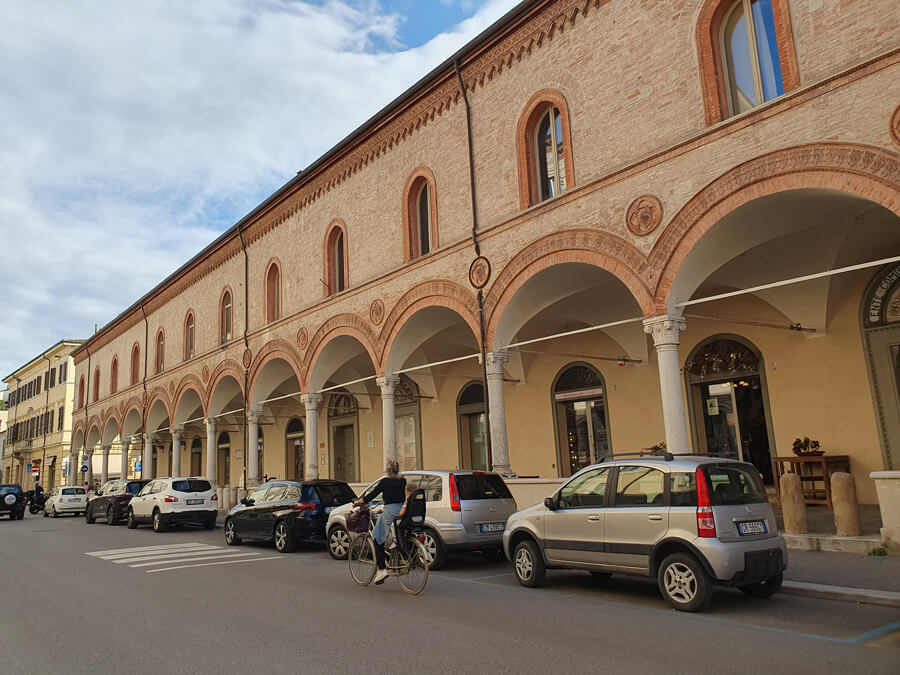
Where to stay in Faenza
There isn’t a huge amount of accommodation in Faenza, so I’d recommend looking up options and booking well in advance for the best choice. Those travelling with cars will find more options in the surrounding area, from out-of-town hotels to villa or farm stays. Centrally there are more B&Bs, guest rooms and apartment rentals, some very welcoming and convenient, though you should always read reviews to get an idea what to expect.
- Hotels, B&Bs and apartments in Faenza – take your pick, or you could consider:
- Le Dame Manfrede – guest rooms and an apartment in a central location
- Da Coco e Mini – subtitled ‘corner for the travelling ceramicist’, this guest house option comprises a suite of rooms within the friendly owners’ apartment (cats included)
- Hotel Vittoria – traditional 4-star hotel with elegant public spaces. Convenient location a 5-minute walk from Piazza del Popolo
- Villa Abbondanzi Resort – just out of town, an imposing historic building in green grounds with spa and swimming pool. A pricey option for a special stay.
Accommodation links on these pages are my affiliate links. If you make a booking through these, Italy Heaven will earn a small amount of commission without you paying any extra. Thank you so much for your support in keeping the website online!
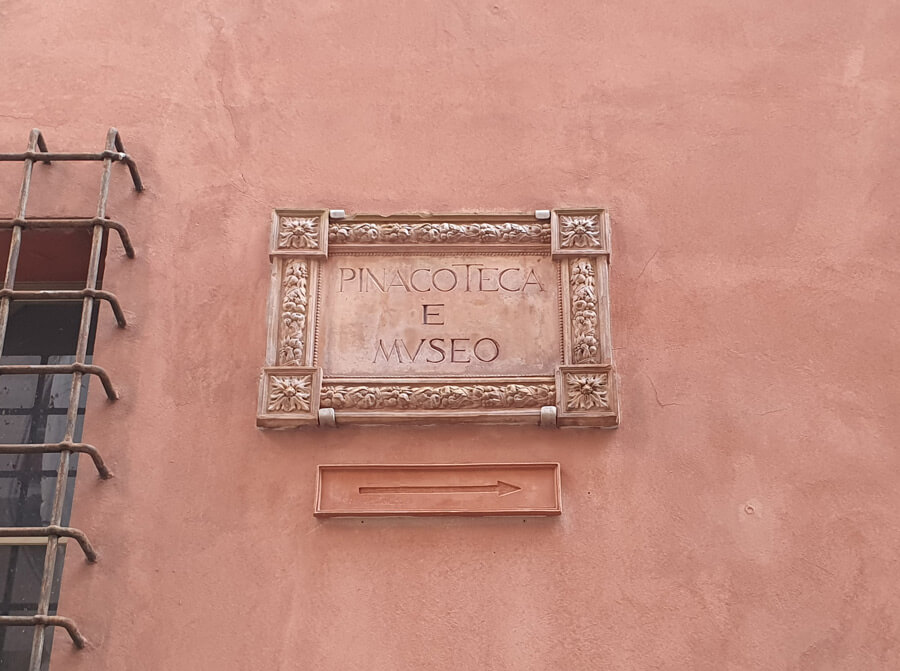
Faenza travel and transport
Faenza is in a good strategic position for travellers, on the main railway line which runs through Emilia-Romagna along the route of the old Roman Via Emilia. It’s on the stretch of line connecting regional capital Bologna with seaside Rimini, and is close to Imola (site of the Emilia-Romagna Grand Prix). Faenza is in the province of Ravenna and there are also direct trains and buses to Ravenna, a journey of 30-45 minutes.
A historic railway line connects Faenza with Florence. Called the Ferrovia Faentina, this is a scenic line offering an opportunity to see more of the landscape of this quiet corner of Italy, with stations including Brisighella.
The railway station is a short distance outside Faenza’s historic centre. Piazza del Popolo is a fifteen-minute walk away – start by heading straight ahead from the station down the wide Viale Alfredo Beccarini. The ceramics museum is on this street, just seven minutes from the station, so is very convenient for rail travellers. After passing the museum, look out for an artistic high school on your left; it has some fine ceramic decoration outside and inside its front door. Turning left along Corso Giuseppe Mazzini will lead you into the heart of town and Piazza del Popolo.
Most buses serving the area have stops near the railway station. There’s a small bus station (autostazione) on Viale delle Ceramiche behind a petrol station and the Autocorriere bar. I caught my bus to pretty Brisighella here (read more about Brisighella and its transport connections).
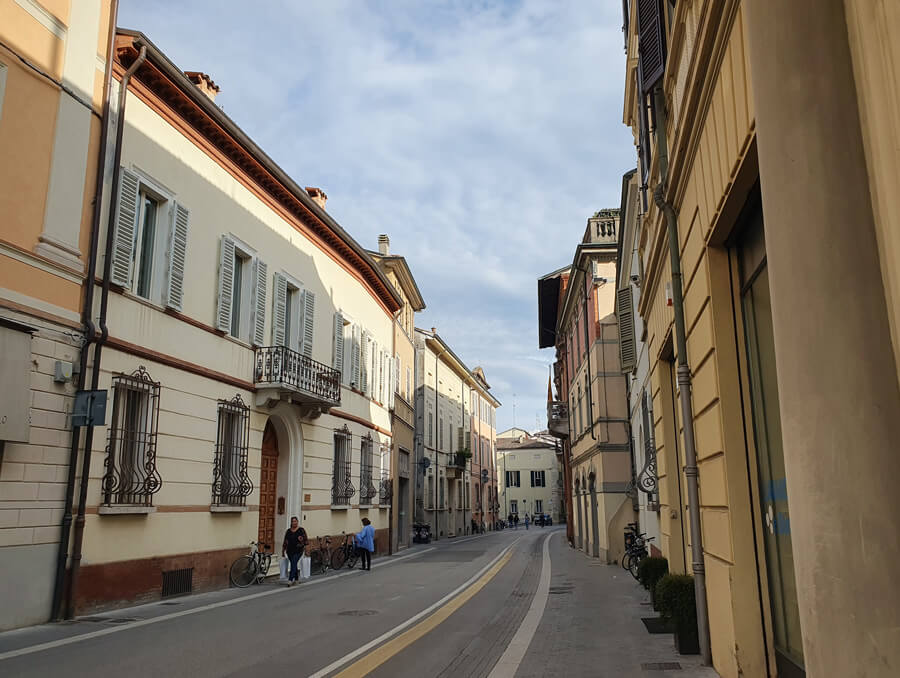
Around Faenza
As I mention in my intro above, I’d strongly recommend a side-trip to Brisighella if you’re staying in or visiting the Faenza area. This picturesque little town at the edge of the hills is an utterly charming destination for a leisurely excursion and/or lunch. It’s easily reachable by public transport as well as by car, though car-free travellers should check timetables in advance and plan around these.
I visited Faenza and Brisighella as a combined day trip from seaside Rimini. The towns along the main railway line here are all easily visitable from each other, with relatively frequent and cheap regional trains. If you’re staying in Faenza, easy excursion destinations along this railway include Bologna, Imola, Rimini, Forlì and Cesena. Buses and the Faentina railway line will take you to smaller destinations in the surrounding countryside. Ravenna, famous for its mosaics, makes a good artistic ‘companion’ destination with Faenza, and can be reached by direct train or bus, as well as by more frequent trains with a change at Castel Bolognese.
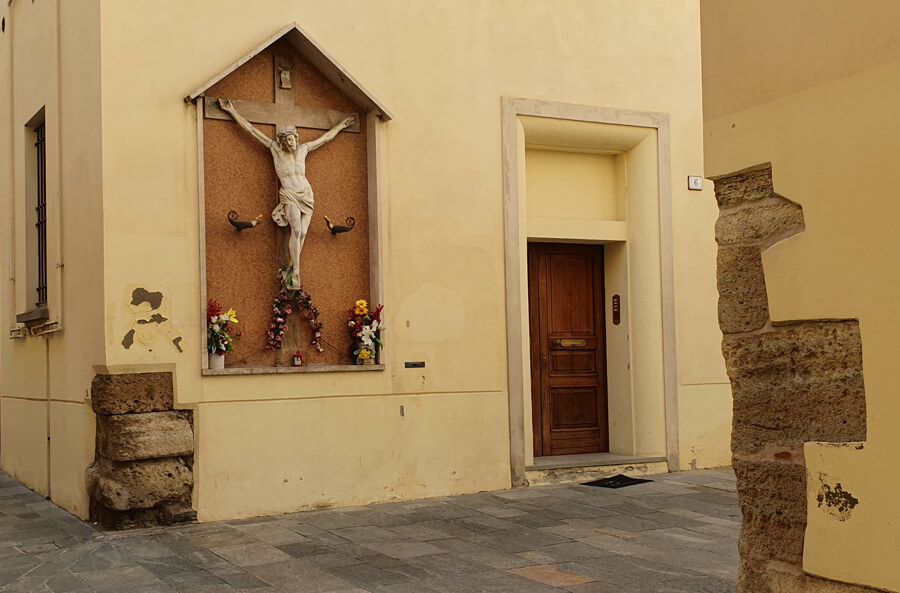
Emilia-Romagna destinations
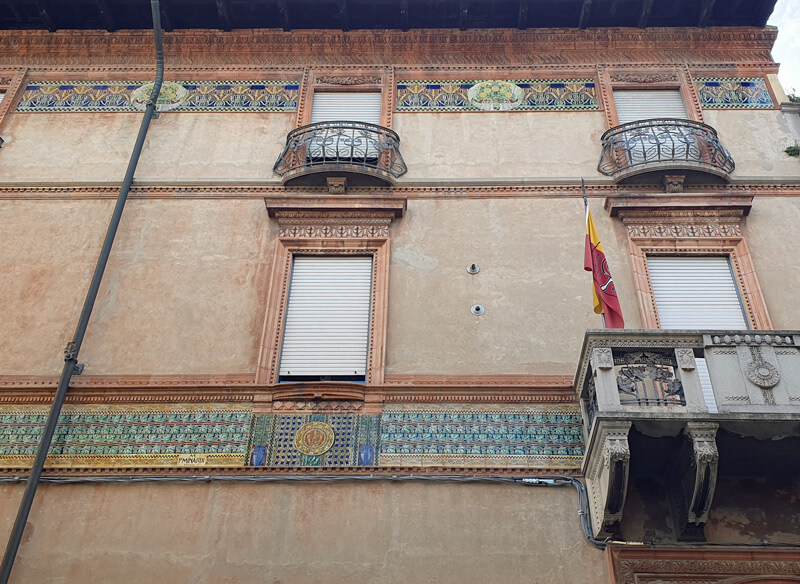
Have you found this destination guide and website helpful when planning your travel? If so, please consider using or bookmarking my hotel affiliate links, or making a donation through buying me a coffee to help me keep this up. Thank you and enjoy your travels!
